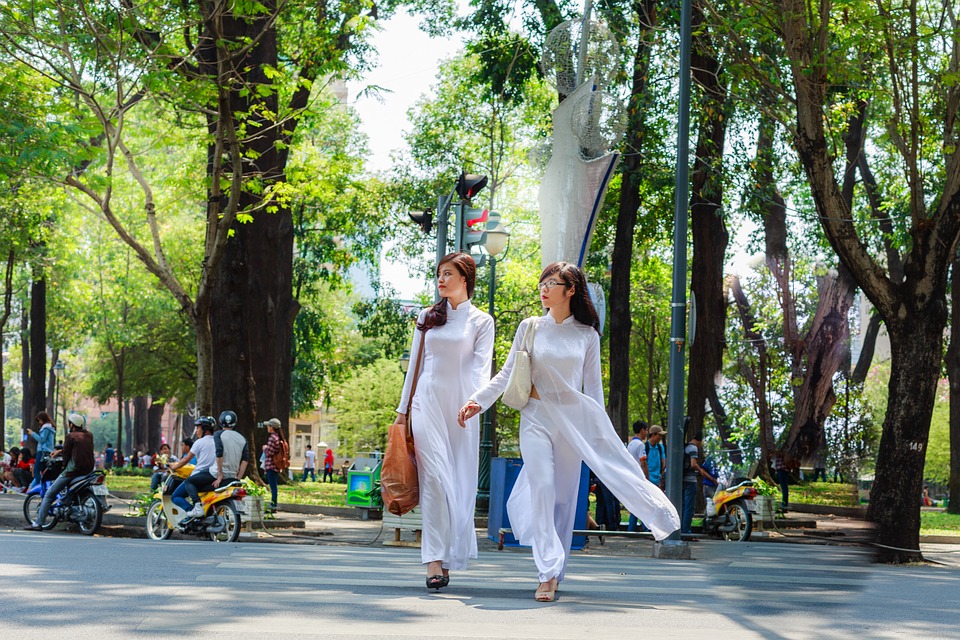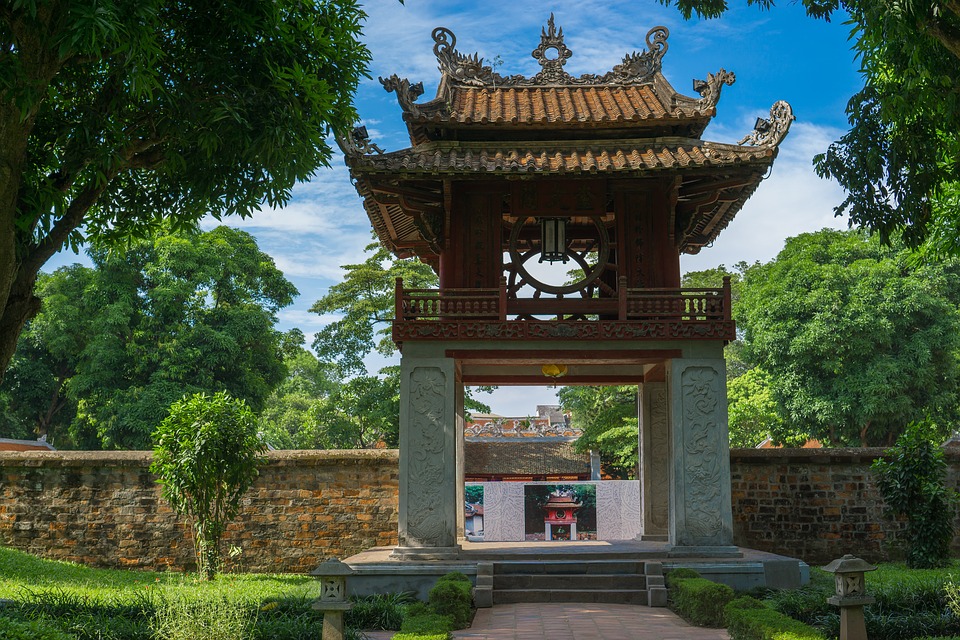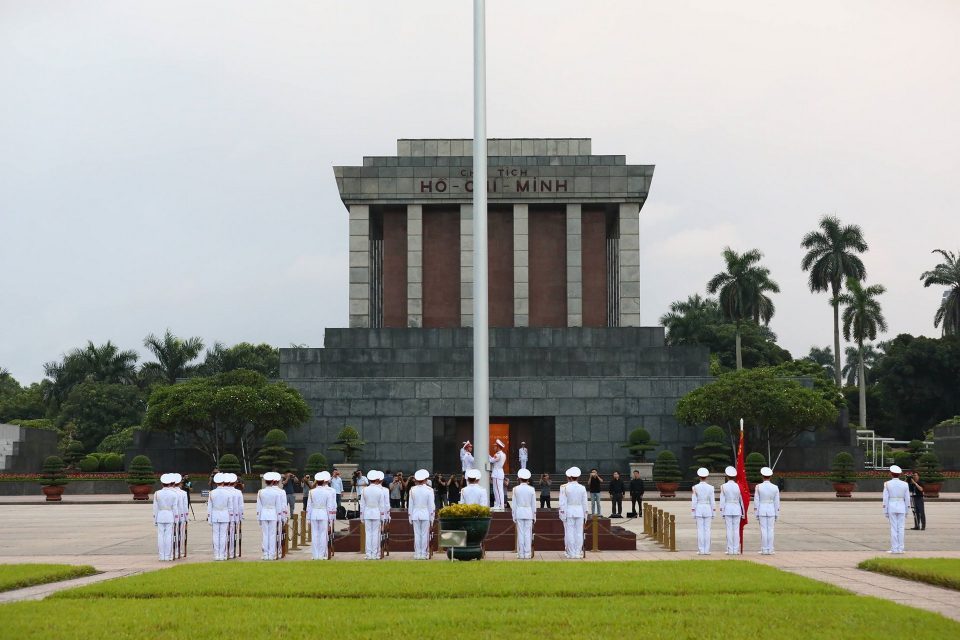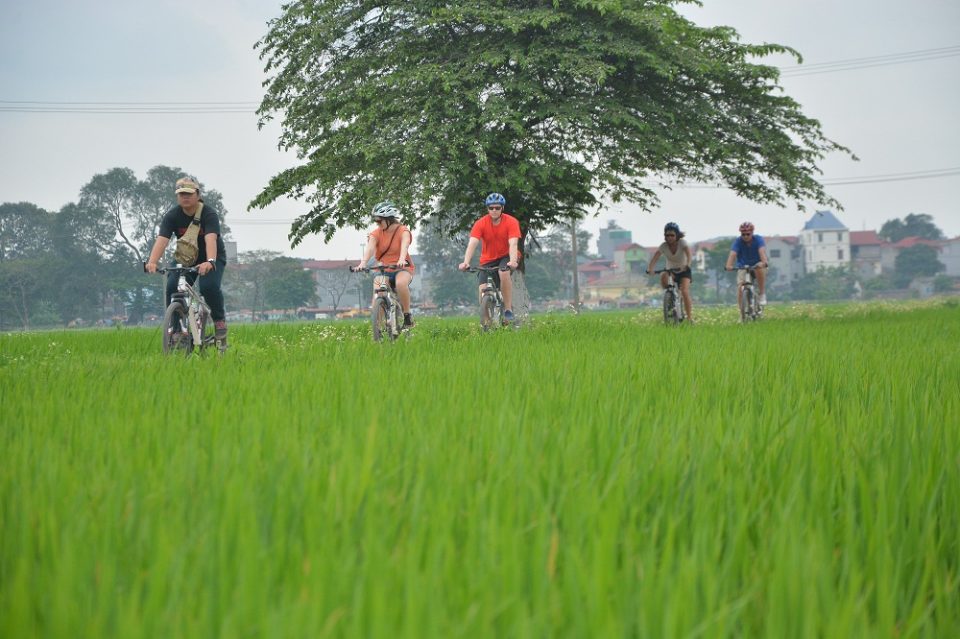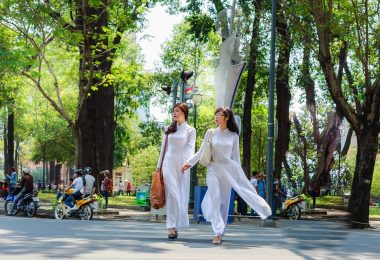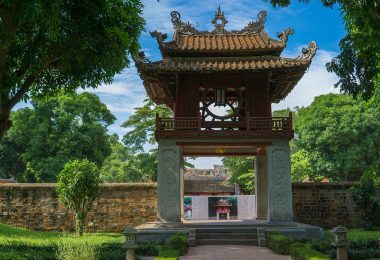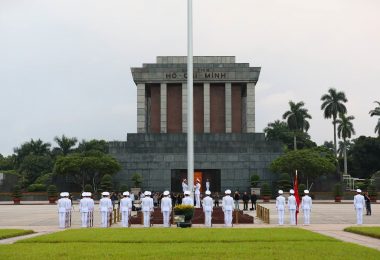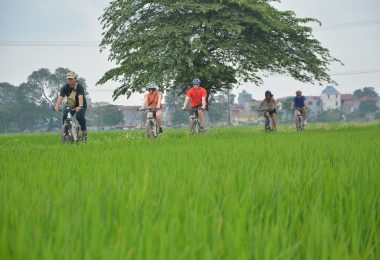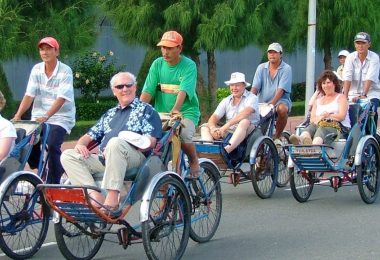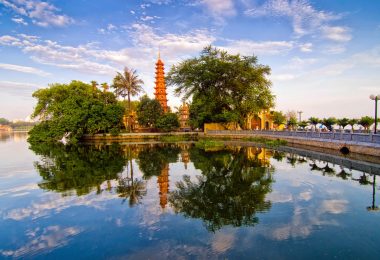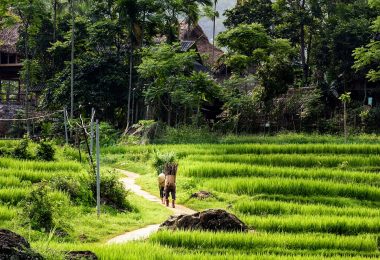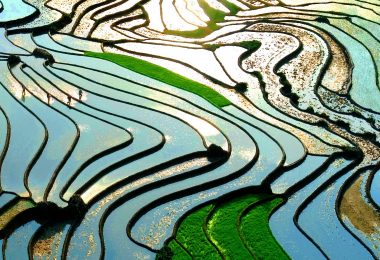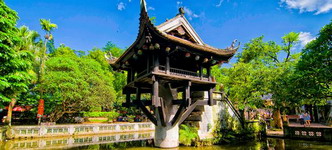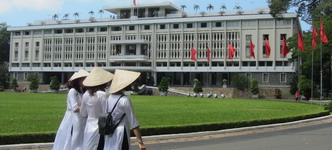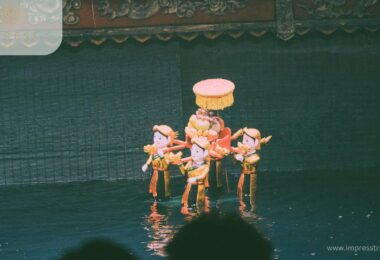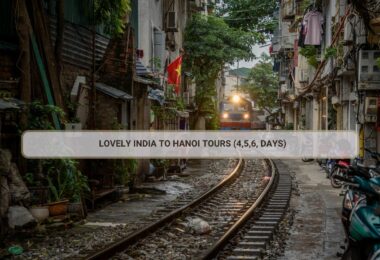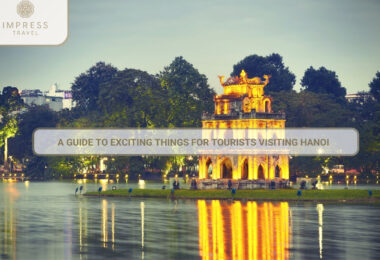If you have chosen Hanoi as your destination with family and friends on your upcoming vacation, the tourist destination you should not miss when coming to the capital of Van Hien is the Temple of Literature – the first university in Vietnam. Please join us in consulting the detailed tour ticket prices to better understand this special architectural work.
Overview of the history of the Temple of Literature
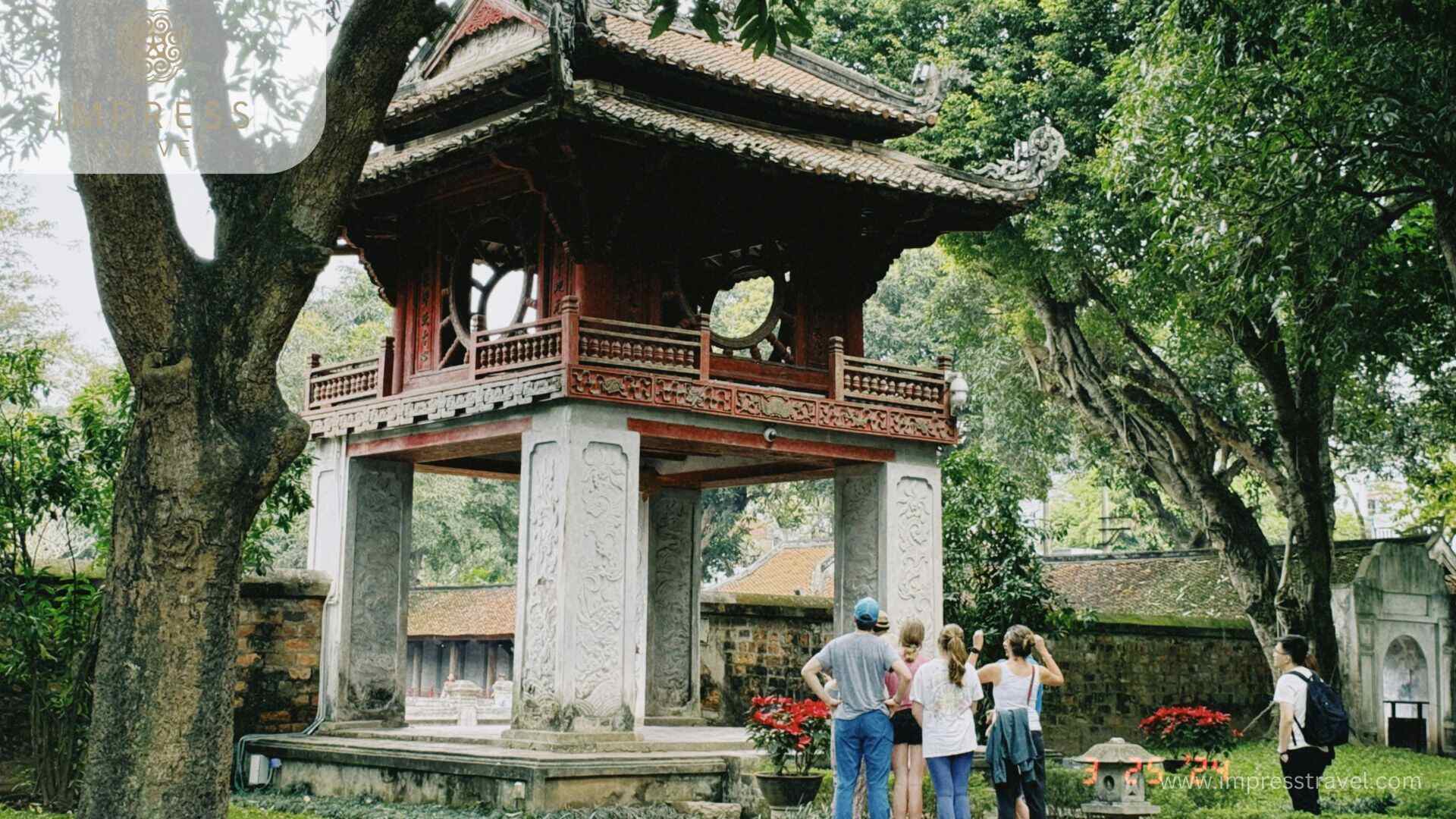
The Temple of Literature
The Temple of Literature is two works built to teach and worship Confucius and his four descendants: Nhan Tu, Tang Tu, Tu Tu, Mencius and drawings of sages for worship and the four seasons of worship.
Construction began in 1070 under King Ly Thanh Tong and Quoc Tu Giam was built in 1076, under King Ly Nhan Tong.
This place is considered the first university in Vietnam under the Ly Dynasty, one of the most developed periods of Vietnamese education in our country’s feudal eras, especially during the reign of King Ly Nhan Tong.
After being built, studying at Quoc Tu Giam began in 1076 and was mainly reserved for the king’s children and noble families. During the reign of King Tran Thai Tong, Quoc Tu Giam was renamed Quoc Tu Giam and accepted children of commoners with excellent academic ability. Many famous scholars who contributed to the royal court studied at Quoc Tu Giam.
During the reign of King Tran Minh Tong, Chu Van An was appointed to be the official Quoc Tu Giam Tu Nghiep (Principal) and direct teacher of the princes. In 1370, Chu Van An passed away and King Tran Nghe Tong allowed him to be worshipped at the Temple of Literature next to Confucius.
In the post-Le period, King Le Thanh Tong began to erect steles of those who passed the doctoral exam. During the Nguyen dynasty, Quoc Tu Giam established Hue. The Thang Long Temple of Literature was renovated and became only the Temple of Literature of Bac Thanh town, later changing to the Temple of Literature of Hanoi. Through the ups and downs of the war, there are now only 82 steles left and are located around Thien Quang Lake.
Sightseeing ticket price Quoc Tu Giam Temple
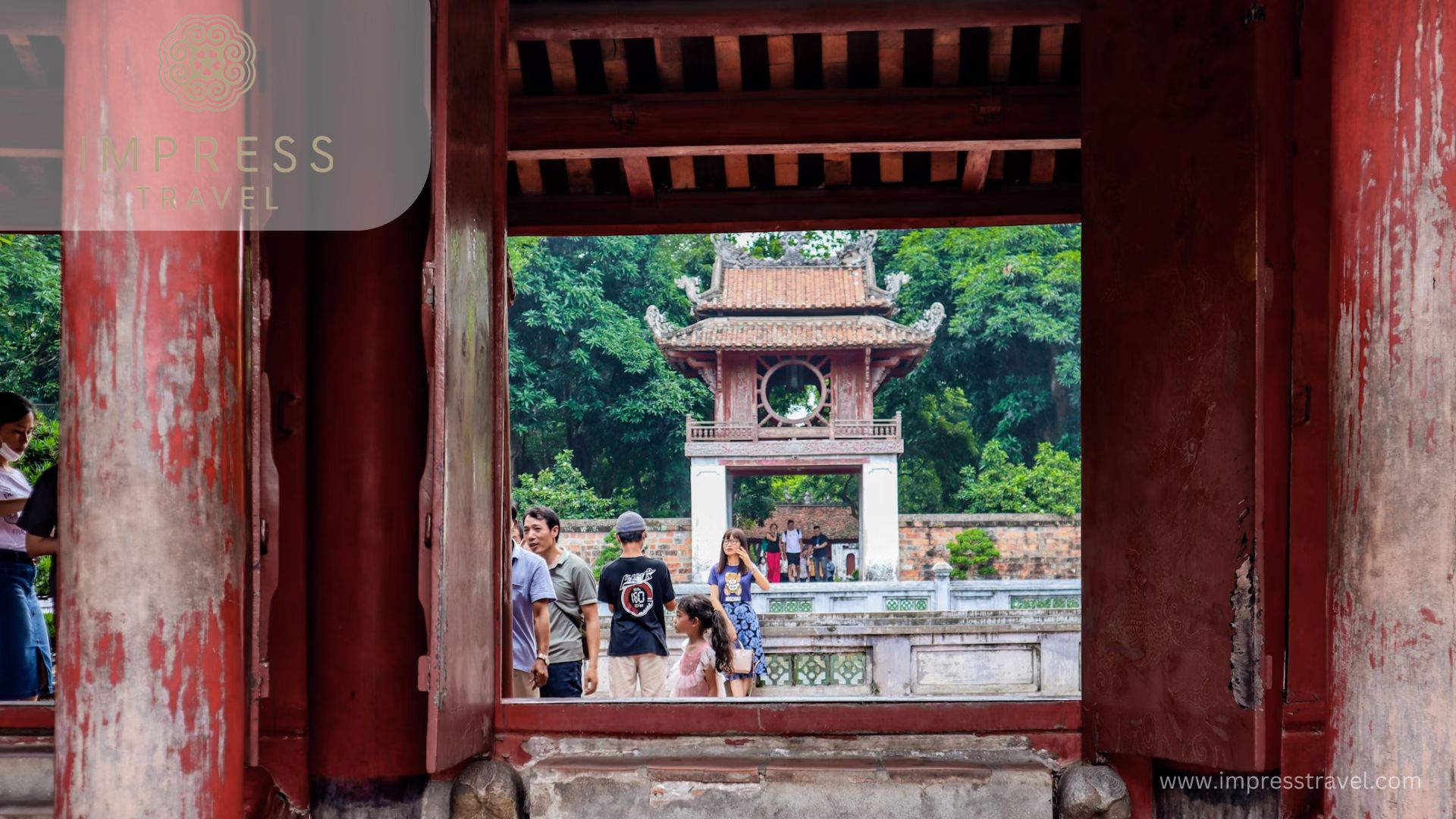
The Temple of Literature
Domestic and foreign tourists and residents of the capital must buy entrance tickets when visiting the Temple of Literature. You can refer to the entrance ticket prices below.
- Adults: 30,000 VND/ticket
- People with severe disabilities and children under 15 years old: Free tickets
- Elderly people over 60 years old, students, people with severe disabilities, and people in remote mountainous provinces: 50% discount on ticket price (15,000 VND)
Opening hours to welcome guests at the Temple of Literature:
- During the hot season (from April 15 to October 15): From 7:30 a.m. to 5:30 p.m.
- During the cold season (from October 16 to April 14): From 8:00 a.m. to 5:00 p.m.
Instructions for moving to the Temple of Literature
Travel by personal vehicle to the Temple of Literature
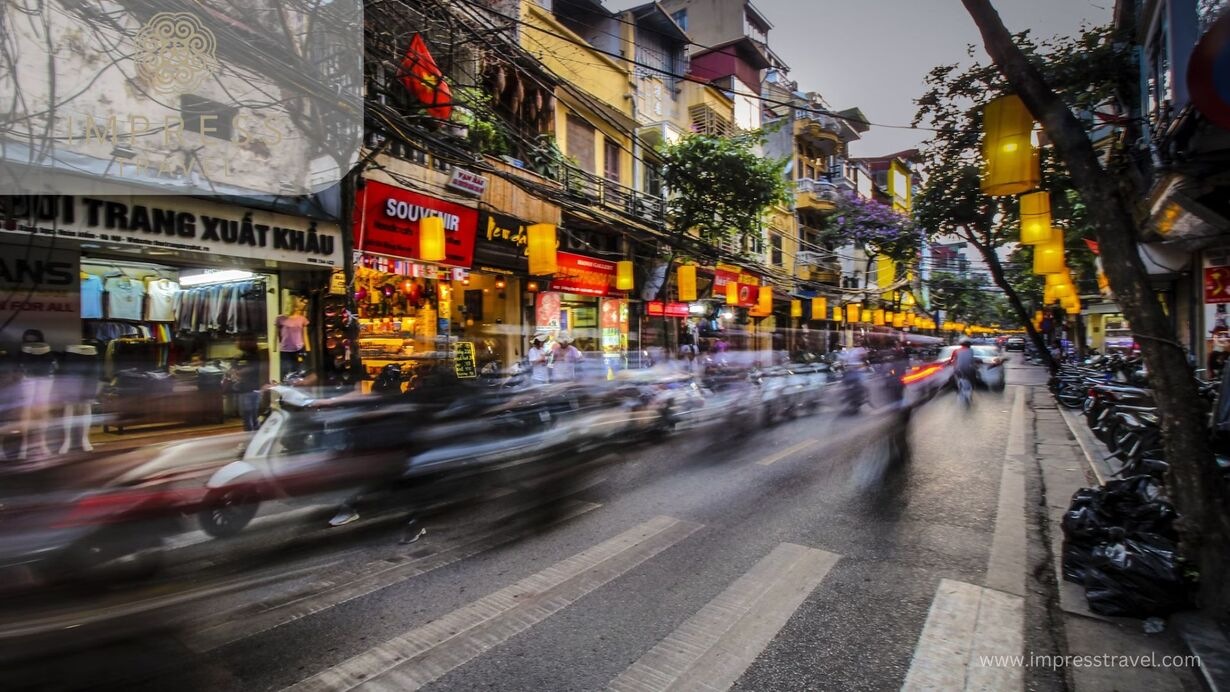
Hanoi street
In Hanoi, traveling by personal vehicle is the fastest way for you to get to tourist destinations in the inner city. Starting from Hoan Kiem Lake, you move in the direction of Le Thai To Street, turn right onto Trang Thi Street towards the south gate of the city.
Coming to Nguyen Khuyen Street, go straight to Van Mieu Street to reach the main gate of the Temple of Literature.
If you are from other provinces coming to the capital, you need to note that in the inner city of Hanoi, there are many one-way roads, especially in the area around the Temple of Literature. Therefore, you should remember to comply with traffic laws. road traffic to avoid unexpected situations that may occur.
The bus goes to the Temple of Literature
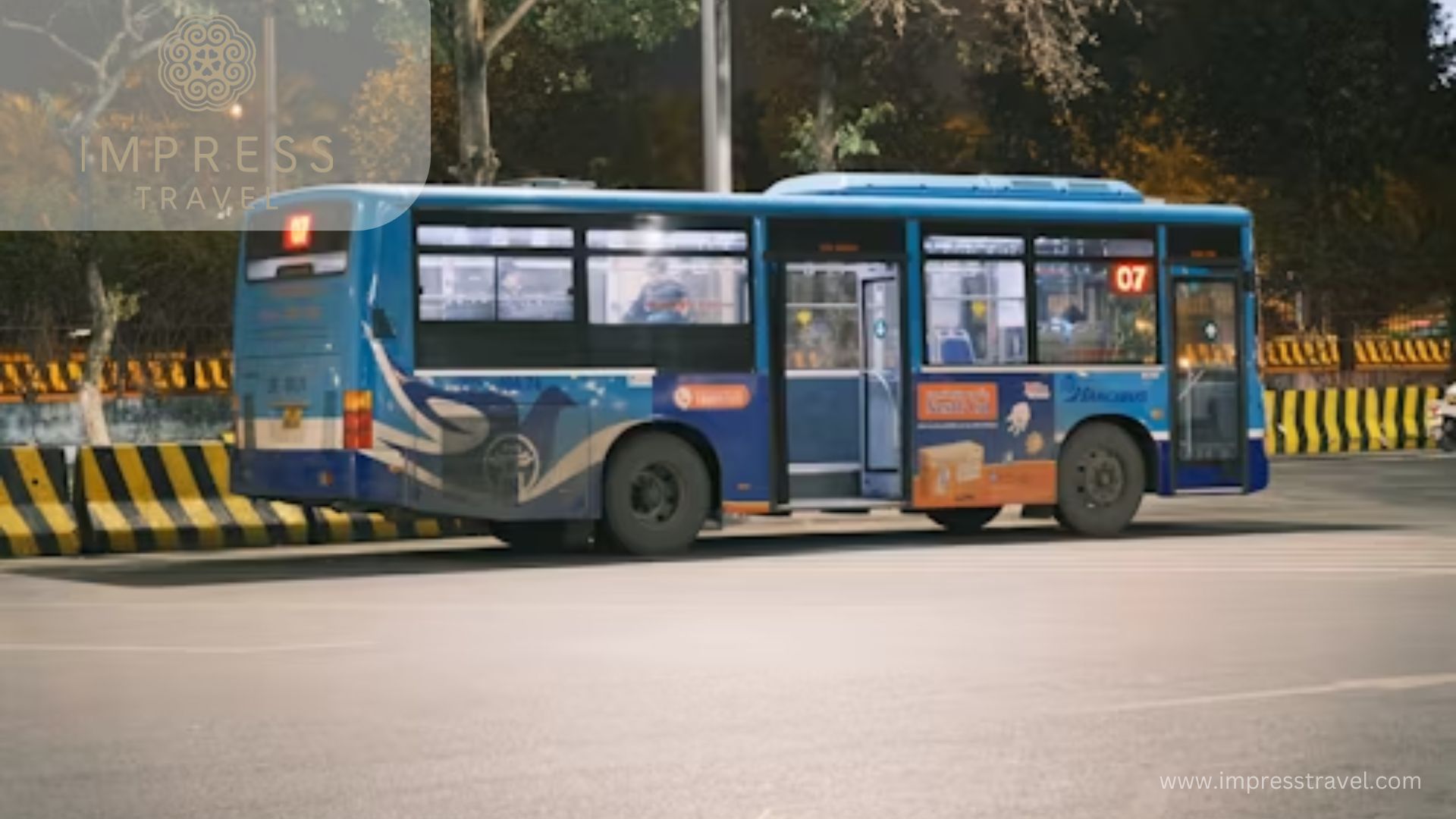
Hanoi bus
The Temple of Literature today is much smaller than it was 10 centuries ago. The relic site is also divided by roads, but overall still retains its ancient features.
The streets around the Temple of Literature are usually one-way streets, so if you are not familiar with the streets of Hanoi, you can use public transportation such as the bus to the Temple of Literature. Specifically, you can take the bus on routes around the Temple of Literature, such as the following:
- Route 02: Uncle Co – Yen Nghia bus station
- Route 23: Nguyen Cong Tru – Nguyen Cong Tru
- Route 32: Giap Bat – Nhon bus station
- Route 38: Nam Thang Long – Mai Dong
- Route 41: Nghi Tam – Giap Bat bus station
Explore the highlights of the Temple of Literature relics

Khue Van Cac
If this is your first time coming to the Temple of Literature in Hanoi, we will help you better understand this national monument complex. The Temple of Literature is located on an area of 54,331 m2, including a total of 5 main areas built and separated by brick walls and gates.
This is the first university in our country that demonstrates the studiousness of Vietnamese people since the feudal period. The entire current architecture of the Temple of Literature is from the early Nguyen Dynasty. All four sides are streets, the main southern gate is Quoc Tu Giam Street. In front of the Temple of Literature is Van Chuong Lake, formerly known as Thai Lake. In the middle of the lake is Kim Chau Mound, where literary and poetic reviews of ancient scholars of the ancient capital took place. The main gate of the Temple of Literature is built in the style of Tam Quan, with the words “Temple of Literature" on it in ancient Chinese characters. The first area starts with the main gate of Van Mieu Mon and goes to Dai Trung Mon gate, on both sides there are small gates to Thanh Duc Mon and Dat Tai Mon.
Leaving Dai Trung Mon for Khue Van Cac, you will see the clear ancient architectural beauty of the Ly-Tran dynasties. The outstanding feature in the architecture of the Temple of Literature is Khue Van Cat, an architectural work that represents Vietnamese literature and education during the feudal period. According to ancient beliefs, the architecture of Khue Van Cac was built according to the theories of yin and yang. It consists of 4 square brick pillars measuring about 85cm x 85cm below, supporting the upper floor with very beautiful wooden structures. The upper floor has 4 circular doors symbolizing the Khue star in the sky, a simple, rustic wooden railing and wooden roof supports. The two-layer overlapping tile roof creates a structure with 8 roofs, ridges and a flat roof surface.
Khue Van Cac was built in 1805, and the attic is a square floor with eight roofs. On the right and left sides of Khue Van Cac are Bi Van Mon and Suc Van Mon, leading to the two Doctor’s stele houses.
According to the I Ching, the numbers 1, 3, 5, 7, 9 belong to the yang. Khue Van Cac has the number 9, which is an extremely positive number, symbolizing the sun. The image of Khue Van Cac in the Temple of Literature is recognized as a symbol of Hanoi.
The third area includes Thien Quang Tinh Lake, meaning well of sunlight, built in a square shape symbolizing the ground. What does the Temple of Literature have? On both sides of the lake are doctoral steles established from 1442 to 1779. The steles are all made of stone, engraved with the names of Poinsettias, Ban Nhan, Tham Hoa, Doctor, Hoang Giap placed on stone turtles. big.
The ancients believed that when scholars came here to offer incense to Master Chu Van An and the kings and touch the stone turtle’s head, they would have good luck in exams and pass high scores.
If you want to better understand the culture and architecture of the Temple of Literature, don’t forget to go to the fourth area of the Temple of Literature, which is also the central area of the relic complex. This place consists of two large works with parallel layouts connected: Bai Duong Court and inside is Thuong Cung.
The last area is the Thai Hoc area. There was a time when this was the Khai Thanh temple area, worshipping Confucius’s father and mother, but it was destroyed. However, the new Thai Hoc building was rebuilt by Hanoi City in 1999.
In this fifth area, there is also the Tien Duong-Hau Duong house, which is the place to worship kings Ly Thanh Tong, Ly Nhan Tong, Le Thanh Tong and Quoc Tu Giam Chu Van An.
Some experiences when visiting the Temple of Literature
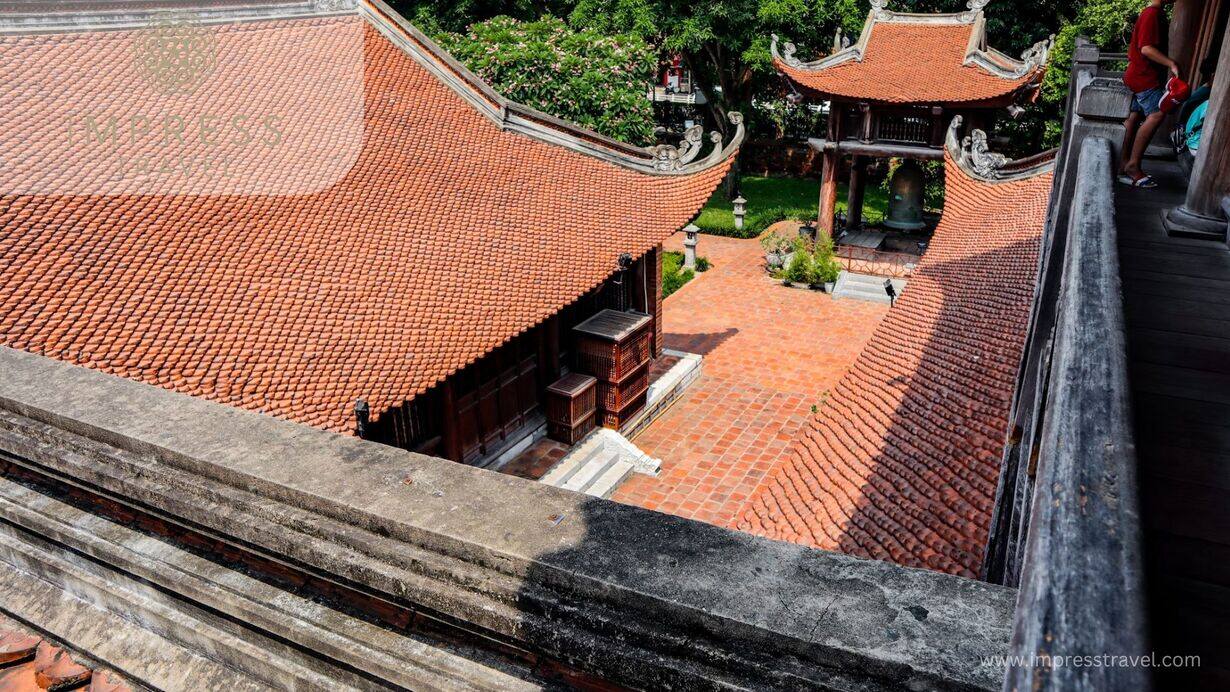
Temple of Literature
To help you have a fun experience at the Temple of Literature and not violate the rules of the Temple of Literature. Below are some of our travel experiences to the Temple of Literature for you.
- You should respect and comply with the regulations of the relic management unit. Do not harm relics or relic landscapes, do not rub turtles’ heads, write, draw, stand, or sit on the doctor’s stele, etc.
- What should I wear when traveling to the Temple of Literature? When going to a historical site such as the Temple of Literature, you need to dress politely. You should not wear too short skirts, revealing clothes, or indoor clothes. Do not wear hats or smoke while offering incense.
- Have the right attitude when performing ceremonies, each person only lights one stick of incense, offers offerings, and burns incense in the right place.
- Maintain hygiene and protect the environmental landscape in and around the Temple of Literature. Do not climb walls, trees, break branches, pick flowers, step on grass, fish, swim, or litter.
- Do not bring explosives or irritants into the monument.
- Park your car at the designated place of the Temple of Literature and protect your personal belongings to avoid theft
- Filming activities at the Temple of Literature can only be carried out with the consent of the relic’s leaders.
- If you are a student, you should bring your student card to receive discounted entrance tickets.
Conclusion
The Temple of Literature has become a historical testament not only to the capital but also to the pride of the entire nation in the studiousness of the Vietnamese people. Come with your friends and loved ones to explore the Temple of Literature and learn about the wonderful things about historical sites when traveling to Hanoi!
The interesting information about traveling to Hanoi and to book Hanoi tours at the best prices.






































